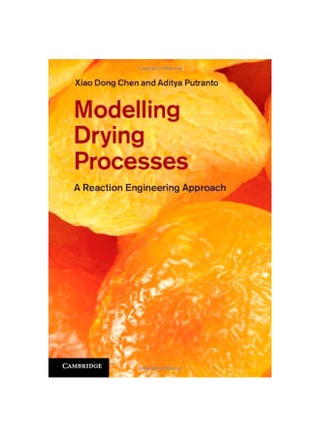| Editorial Review | The REA is easy to use with the guidance of featured application examples given in this book ... highly recommended for both academics and industry practitioners involved in any aspect of thermal drying.' Zhanyong Li, Tianjin University of Science and Technology 'An interesting book on a novel approach to mathematical modeling of an important process ... a single comprehensive reference source.' Sakamon Devahastin, King Mongkut's University of Technology Thonburi '... a profound [and] at the same time relatively easily implementable modelling approach to model and predict drying processes ... a very fundamental and theoretically rigorous spatially distributed modelling approach ...' Benu P. Adhikari, University of Ballarat, Australia "The Reaction Engineering Approach (REA), which captures the basic drying physics, is a simple yet effective mathematical model for practical applications of diverse drying processes. The intrinsic "fingerprint" of the drying phenomena can in principle be obtained through just one accurate drying experiment. The REA is easy to use with the guidance of featured application examples given in this book. This book is highly recommended for both academics and industry practitioners involved in any aspect of thermal drying." - Zhanyong Li, Tianjin University of Science and Technology, China "An interesting book on a novel approach to mathematical modeling of an important process. Modeling Drying Processes: A Reaction Engineering Approach is the first attempt to summarize the REA to modeling in a single comprehensive reference source." - Sakamon Devahastin, King Mongkut's University of Technology Thonburi, Thailand " a profound at the same time relatively easily implementable modelling approach to model and predict drying processes... a very fundamental and theoretically rigorous spatially distributed modelling approach" - Benu P. Adhikari, University of Ballarat, Australia |
Free & Easy Returns
Best Deals




